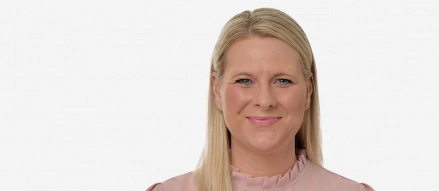
Aged Care – What you ought to know
If your ability to live independently starts to decline and you need help with daily living activities such as cooking, cleaning and personal care, you may need to move into residential care.
Residential aged care should not be confused with retirement villages which are independent living options and operate under very different fee structures. Here we summarise the key points you ought to know when considering aged care options:
Costs associated with residential care
The costs for residential care are divided into three categories:
Cost of accommodation > Daily care fees > Extra services
The daily care fees can be up to $110,878 per year, but a large portion is paid by the government. The contribution you would pay is between $18,845 and $46,600 depending on your financial means (as assessed by the Department of Human Services - DHS).
For most people however, the biggest concern is how to pay the large amounts quoted for a room. These range from around $100,000 to $2 million but will commonly be between $400,000 - $600,000. These lump sum payments are called Refundable Accommodation Deposits – RADs.
Seeking financial advice on what options you have for payment and funding strategies may help to minimise your stress. Let’s examine some of the facts around accommodation payments.
Fact 1 – this is not lost money
The first thing to know about RADs (paid since 1 July 2014) is that they are fully refundable when you leave care, unless you allow the service provider to deduct other fees to help with your cashflow. Repayment is also guaranteed by the Federal Government if paid to an approved provider – an important thing to check when you are selecting a care provider.
Fact 2 – you don’t have to pay the lump sum
Accommodation payments are quoted as a lump sum but are also converted to an equivalent Daily Accommodation Payment (DAP). The interest rate used for this conversion is currently 4.91% (for entry from 1 January 2020 – 31 March 2020).
For example, a RAD of $400,000 is converted to a DAP of $53.81 per day. If you accept a place in a residential service, you can choose whether to pay the full RAD, the full DAP or any combination of the two. You don’t need to make this choice until 28 days after moving into care and the service is not able to pressure you to choose any particular option.
Fact 3 – even if you have less assets than the published RAD it may be affordable
If you don’t have enough assets to pay the RAD the first step may be to see if you qualify for government concessions as a low-means resident – this would require your share of assessable assets to be less than $169,079.20. If you don’t qualify you will need to find a way to fund the full accommodation payment requested by the service. If you don’t have enough assets, paying a part RAD and part DAP may help, but only if you have surplus cashflow to pay the DAP.
One further strategy option is to pay as much of the RAD as you can afford and then instruct the service provider to take the DAP (on the unpaid amount) out of the RAD you have paid. This option leaves your income to meet daily care fees and living expenses but reduces the RAD refunded when you leave. This can help you fund the accommodation payment to access the care you need.
Example:
Bert is moving into residential care. He is a widower on the full age pension with a home worth $420,000 and $20,000 in the bank. The service he and his family have chosen is asking for a RAD of $530,000 (or $71.30 per day).
Bert is worried that he cannot afford a place in this service without asking his children for help. He sought advice on his options and decided to take the advice to:
- Sell his home (with $20,000 of sales costs)
- Use the net sale proceeds to pay a $400,000 RAD, leaving a DAP of $17.49 per day on the remaining $130,000
- Instruct the service provider to deduct the DAP each month from his RAD
This leaves his $24,268 age pension to cover his daily care fees of $21,479 per year (this includes the basic daily fee and the means-tested care fee) plus some personal expenses. His DAP is deducted from his RAD leaving Bert financially self-sufficient and keeping a $20,000 cash reserve to meet other expenses.
If you would like to assistance determining whether residential care is an option please contact our certified aged care specialist, Clive Todd. Alternatively please speak with your usual Mazars advisor:
Brisbane - Clive Todd | Melbourne - Amanda Castricum | Sydney - Dean Newman |
+61 7 3218 3900 | +61 3 9252 0800 | +61 2 9922 1166 |
Published: 25/02/2020
Please note that this publication is intended to provide a general summary and should not be relied upon as a substitute for personal advice. We recommend that professional up to date advice specific to one’s circumstances be sought before making any decisions in this regard.
All rights reserved. This publication in whole or in part may not be reproduced, distributed or used in any manner whatsoever without the express prior and written consent of the Mazars, except for the use of brief quotations in the press, in social media or in another communication tool, as long as Mazars and the source of the publication are duly mentioned. In all cases, Mazars’ intellectual property rights are protected and the Mazars Group shall not be liable for any use of this publication by third parties, either with or without Mazars’ prior authorisation. Also please note that this publication is intended to provide a general summary and should not be relied upon as a substitute for personal advice. Content is accurate as at the date published.
© Aged Care Steps Pty Limited, 2020. Used with permission.


